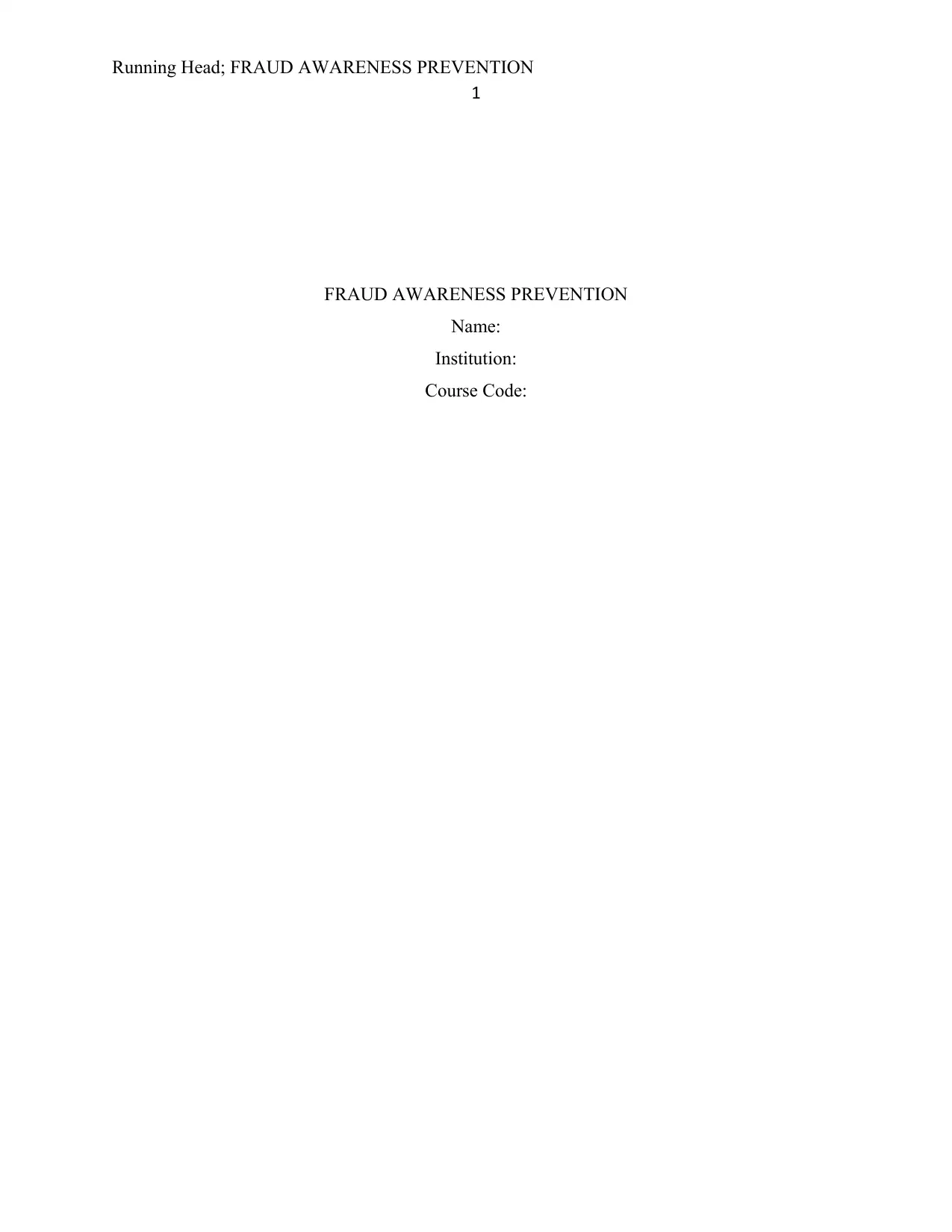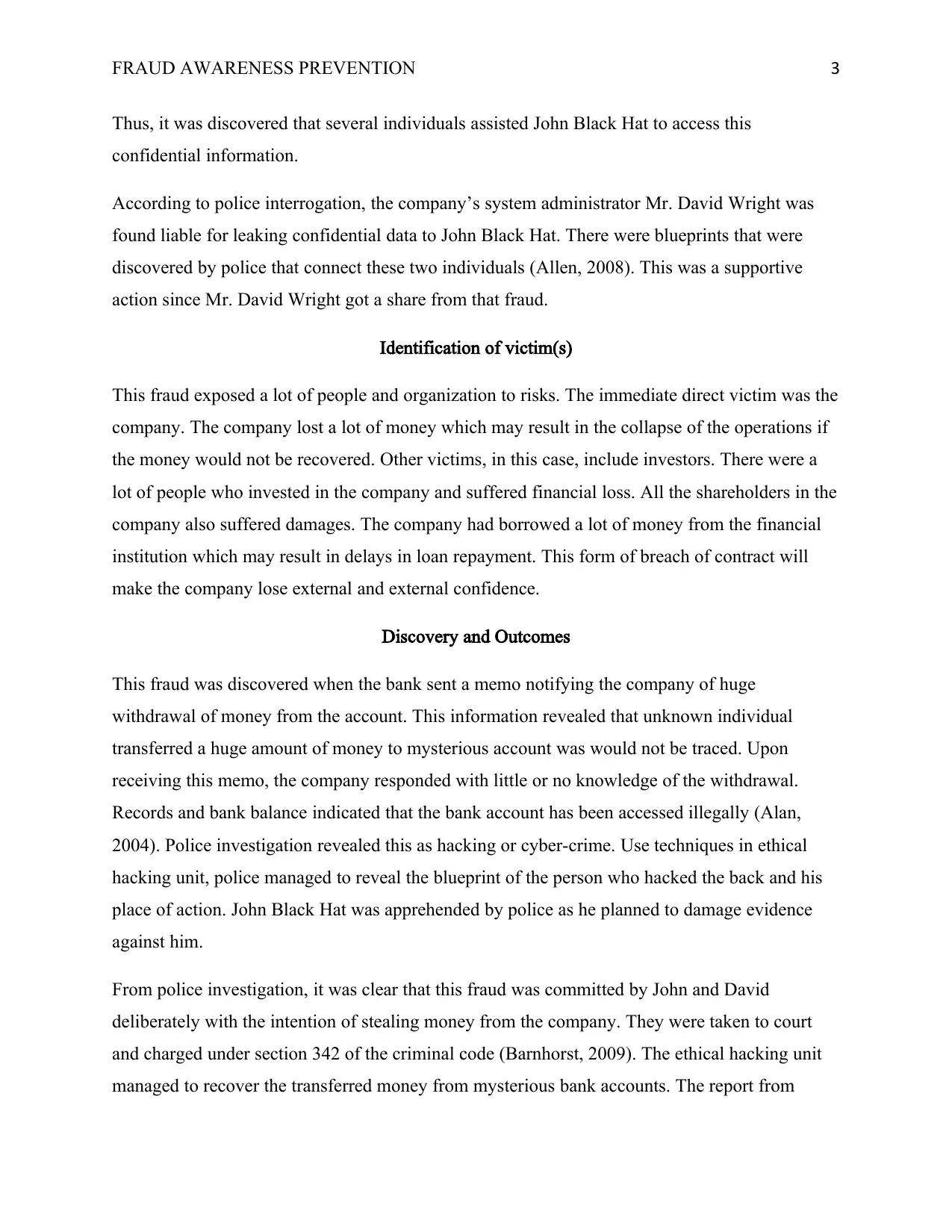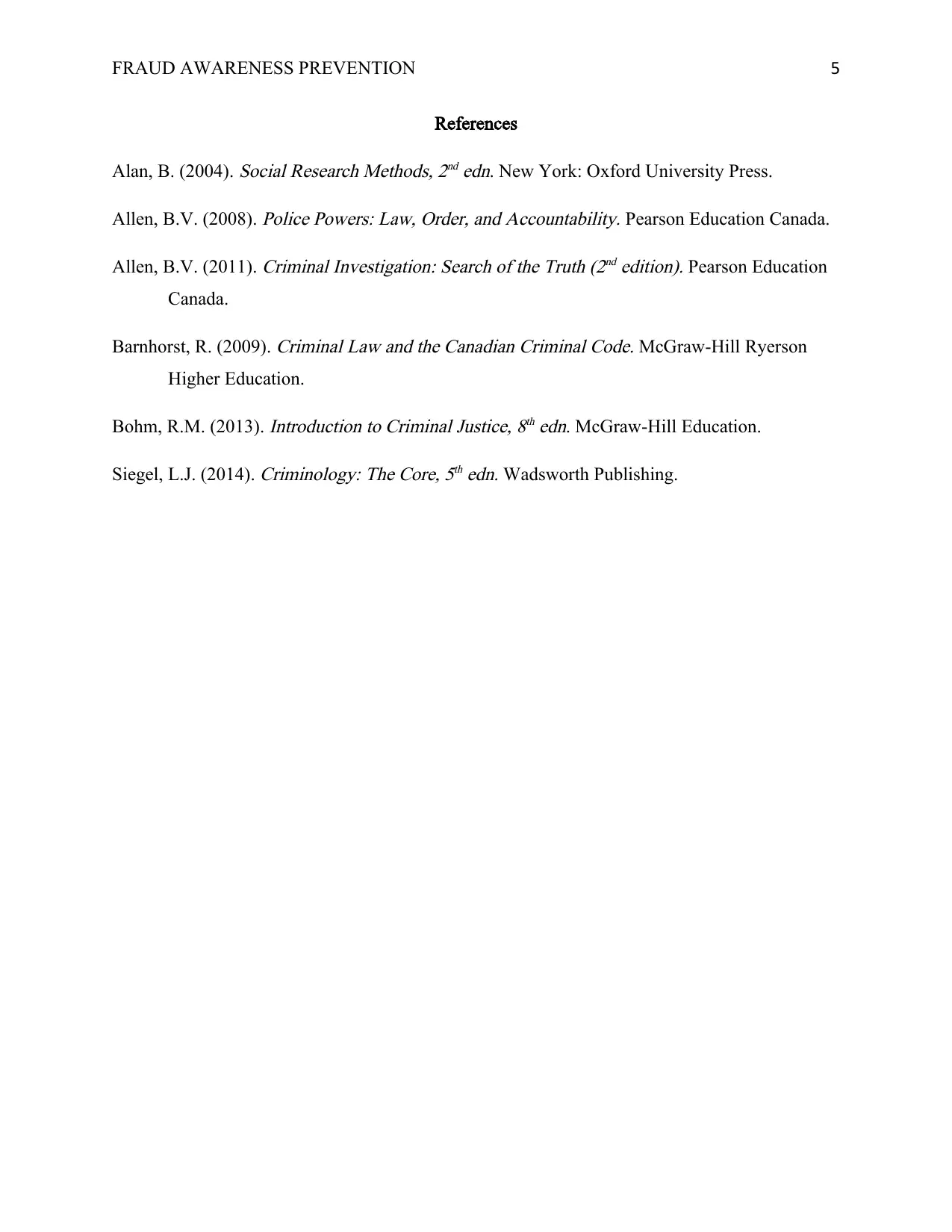Case Study on Cyber Crime: Analyzing Fraud Awareness and Prevention
VerifiedAdded on 2023/06/15
|5
|1073
|373
Case Study
AI Summary
This case study analyzes a cyber-crime incident in London, Canada, where John Black Hat hacked into AGH Company's bank account and transferred a significant amount of money. The fraud was discovered after the bank notified the company of the unauthorized withdrawal. Police investigation revealed that John Black Hat was assisted by the company's system administrator, Mr. David Wright, who leaked confidential information. Both individuals were apprehended and charged under section 342 of the Canadian Criminal Code. The ethical hacking unit managed to recover the transferred money, and the court found John Black Hat guilty of multiple cyber-crime offenses, sentencing him to life in jail. Mr. David Wright received a ten-year sentence for his involvement and cooperation with the investigation. AGH Company recovered the full amount of the stolen funds. This case highlights the importance of fraud awareness and prevention measures in combating cyber-crime.
1 out of 5






![[object Object]](/_next/static/media/star-bottom.7253800d.svg)